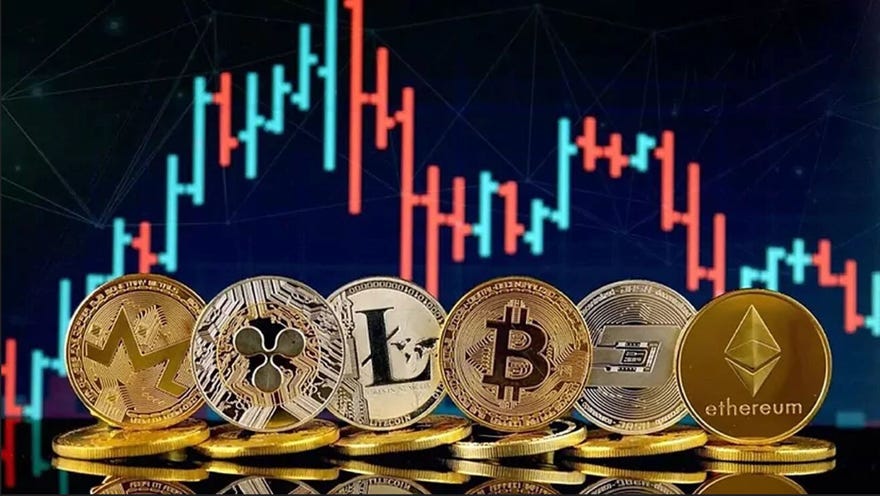Much has been written about cyber-currencies since Bitcoin appeared on the scene, setting off a run of thousands of blockchain value exchanges. As we wrote at the time, the fluctuations in the value of Bitcoin shares proved that it was a commodity unfit for a role as a sovereign currency.
Of course, a similar problem exists with Federal Reserve Notes, which are private bank notes that are supplied to the US government and for which the taxpayers owe principal and interest. This is the basis of capitalism, whereby money (the value created by labor) is commodified via interest, turning it into a commodity that varies in cost, depending on the interest rate set by the financiers who own the Fed and all of the major commercial and investment banks.
As a result, a host of computer software programmers have sought to create an alternative currency that would allow for decentralized, secure, and untraceable value exchanges. Blockchain software is a natural choice for this approach; however, putting aside for the moment the initiatives of several nation-states in this matter, the efforts so far have fallen short in a number of areas due to a lack of properly defining value and lack of understanding of realpolitik.
For example, take Ğ1, the first Libre Currency, created in 2017 using the Duniter Blockchain.
On their website we found two key concepts by which this operates:
Money couldn’t be a way to store value, as Aristotle wanted, simply because value evolves throughout time, and one generation’s way to think about value might be very different from the next one. …
and …
The meter has been defined as one ten-millionth of the shortest distance from the North Pole to the equator, passing through Paris.
The degree Celsius is defined as the difference in temperature between freezing and evaporating water divided by 100.
The SI second is defined by the duration of a certain number of oscillations (9,192,631,770 to be exact) related to a physical phenomenon involving the caesium atom.
These units of measurement are invariant/unchanging and universal for all human beings in time and space.
So, while the creators of this cyber-currency declare that “value evolves throughout time,” they also recognize that there are certain forms of measurement that are constant (ignoring the fluctuations in spacetime approaching the speed of light or absolute zero).
Without reconciling these two positions, the Ğ1 creators base the value of their currency as follows:
The use of the Ğ1 currency doesn’t require any money investment. You can get started by creating a wallet and trade goods or services to receive some Ğ1 on your account, that you will then be able to spend. So, the only investment required is your time to understand how the system works and what valuable goods or services to exchange with the Ğ1 community.
So, from where do the goods and services—that you put in your wallet—originate? From your labor, of course! You spend a certain amount of time making goods or providing a service.
Let’s cut to the chase: since the creators of Ğ1 admit that measurements of time are (relatively) universal and immutable, then one hour of labor today is the same as one hour of labor 1,000 years from now. In other words, the value of one’s labor does not change, unless we allow it, which is what we do when we permit a handful of financiers to control money creation at the Fed and commercial and investment banks and charge interest for the use of their privately owned currency. (Thus, privately owned currency does not represent value created by labor, but value created by the monetization of time (via interest), thus creating false value that inflates the currency.)
This is where realpolik comes in. While a growing number of persons are aware of private control of money creation in the West, they do not understand the ubiquitous implications of this scheme.
The psychological, social, economic, and political influences exerted by the Anglo-Euro-American banking cartel, as executed by their intelligence agencies and the executive-level puppets that run various corporate and governmental agencies, has been building for centuries. These influences control both the red and blue parties the courts, the media, the legal profession, etc., as well as other organizations that span the political and corporate spectrum.
So, to think that a blockchain technology is insulated from these forces is naive, to say the least. In fact, as we discussed a ways back, it is quite likely that the run up of Bitcoin value and profit-taking before a crash is a result of some entity, with bottomless pockets, holding a large stake. Who has such bottomless pockets? Those who own the Fed.
The upshot of all this is that until the Fed is nationalized and becomes a public utility, the power structure will not change and that thinking a crypto-currency is going to provide a viable, long-term workaround is an illusion.
That said, as we have discussed previously, on the level of nation-states, central bank digital currencies make sense for certain types of transactions for those nations seeking to avoid using the banking cartel’s SWIFT system for large international value transfers. This methodology is one of the ways that some members of the current BRICS coalition are currently operating. (See our last post here.)
* * *
We hope that you find our blog of value. If so, please feel free to share our articles and encourage others to sign up for our mailing list. Our last published work, 7 Steps to Global Economic and Spiritual Transformation, Volume I, Access to Tools, is available here and here. Volume II, Application of Tools, is in the process of being published. An earlier version of this sequel, published in 2019, is online in four sections, beginning here.




